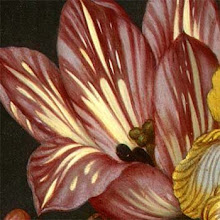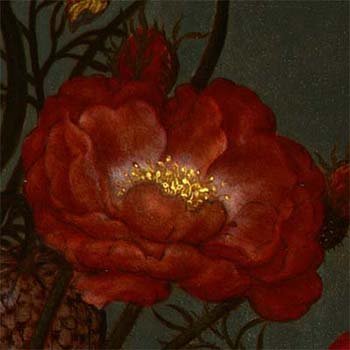When the human eye looks at a scene, things at the focal point appear crisp and well-defined while things in the periphery are fuzzier and less distinct.
One of the important differences between painting and photography is that the painter can simulate the appearance of things as seen by the eye. The painter can decide what they want the viewer to pay attention to, and they can manipulate edges and contrasts in order to guide the viewer's eye around the painting.
A painting with all hard edges, or all soft edges, is visually less interesting than a painting with a variety of edges.
In the upper painting in particular, Bruyas has left the periphery of the composition fuzzier or blurrier than the blooms in the centre.
"lost edges" are parts of the painting where the edge between two objects disappears because the tonal values and colours of the adjacent areas become very close. The objects open out into each other, forming a larger shape, and this adds visual interest to the composition.
In the lower painting the pink roses have a lost edge between them, while a dark leaf provides greater separation between the two white roses. There are also lost edges where the dark leaves are close in value to the shadows on the ground underneath.
A still life painter will often push tonal values up or down in order to create lost edges. This is not dishonest; it is merely simulating what the eye does.




















+Still+Life+Tea+Set,+1781-83.jpg)



-+Frutas+do+Conde.jpg)



































+Still+Life+with+Roses,+14+x+10+in.jpg)









